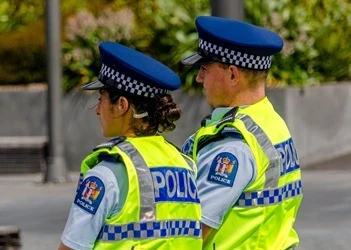Woolworths, BHS ...House of Fraser?
Store has confirmed plans to close 31 shops, resulting in the loss of up to 6,000 jobs.
Add bookmarkThe BBC has just reported that department store chain House of Fraser is to close 31 of its 59 shops, affecting 6,000 jobs, as part of a rescue deal.Â
House of Fraser chairman Frank Slevin is quoted as saying that the retail industry was undergoing "fundamental change... Our legacy store estate has created an unsustainable cost base which, without restructuring, presents an existential threat to the business."Â
Accountancy firm KPMG, which is overseeing the insolvency process, said the firm had been hit by "mounting pressures facing the UK High Street"., and everyone agrees that the business needs to adapt - and fast.Â
It's a familiar story to those of us who've seen several high profile businesses collapse in recent years: a vicious circle of cutting prices – which means cutting margins – leaving stores with less to spend on staying up-to-date and attracting customers. Â
The decline of the high street would be easy to reverse – if all the people who made such a fuss about it put their money where their mouth is. The reality is that millennial shoppers are spending more than ever. Where? Unsurprisingly, online. The boarded up shops certainly look bad, but it would be a mistake to think that the high profile failures tell the whole story of the entire industry. Anyone who has seen big changes happen knows that there is always a glass-half-empty view that isn’t pretty, but the price of doing nothing while the rest of the world changes around you, is only going to be failure. Today's deadwood is tomorrow's opportunity. As Jorgen Liselrud (who has worked at all levels of the European supermarket chain Circle K) told our reporter, shops can either suffer because of technology, or use it to their advantage. Â
Obviously we hope that those losing their jobs find they can quickly find other roles elsewhere, and they should take some comfort from the business environment looking pretty good. It also looks different from what they may be used to.
Here are some key stats from the US: 96% of Americans with internet access have made an online purchase at some point in their lives, and 80% have done so in the last month alone.
My colleague Adam Muspratt has been interviewing retailers about business processes that directly impact the customers, and he spoke to a number of business owners on the subject of returns. ‘The entire process should be flexible and hassle-free, leaving the door open for the consumer to make future purchases,’ he writes.
Charlotte Brown, International Business Strategist at Adelie Ventures says: ‘the process that can have the largest multiplying effect on customer experience and net promoter scores is having the right complaint and recovery strategy in place.’ In Charlotte’s opinion, ‘Apple and Amazon achieve this by sending replacements with only a few questions asked.’
For smaller business but there are other ways to improve the customer experience.
Festival fashionwear retailer, iHeartRaves told us that they moved away from a returns process that was ‘costly, with a lot of manual labor, leading to longer wait times and unnecessary costs. Changing to a more automated process increased profits and provided a much better return process for customers.’
Amazon is doing brisk business, there are numerous apps to turn your phone into a place to buy and sell unwanted goods, and social media have either fully-fledged marketplaces, or are a virtual shop window for products. BPM can and should be in the arsenal when it comes to fighting declining footfall. Many first-time entrepreneurs start off with a product to sell, and the barrier to entry is lower than it’s ever been. With young people going self-employed ‘in their droves’ there are still consumers out there. But for one reason or another, they didn’t spend their money in Woolworths, BHS – or House of Fraser.
With these bleak way-markers to one side, retail looks pretty healthy. And the High Street too, may not yet be ready to have its obituary sent to the proof-reader: I walked down the main shopping street of my home town recently and counted thirty-three places on or within a few paces of the main drag where I could sit down and buy a coffee. The High Street isn’t dead, but over the next few years we may be using it to do a lot less shopping. The question is, apart from coffee and avocado toast, what will we do there instead?




















